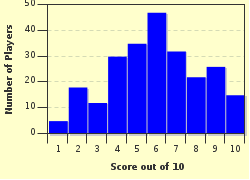Quiz Answer Key and Fun Facts
1. About 3,000 years ago, you could have instructed the ferryman on the Nile to take you over to the west bank. Your destination would have been 'Ta-sekhet-aar'. Why was the modern Valley of the Kings called 'The Great Field'?
2. Why was the valley chosen to serve as a royal burial ground?
3. Once discovered and assessed as suitable, for how long were royals secretly buried in the hillsides of the Valley?
4. For a long time, the tomb of Ramesses III, KV 11, was known as 'Bruce's Tomb'. Who was Bruce?
5. In KV 19 lay prince Mentuher-khepshef. What makes his position unique in the Valley?
6. Apart from the famous Tutankhamun in KV 62, which other pharaoh remained peacefully in his own coffin until 1898, even though thieves cleaned out all his treasures from under his nose?
7. One 19th dynasty king ordered the construction of almost an entire underground city to house his multitude of sons. This tomb is numbered KV 5. Who was the generous father?
8. In what tomb was the granite sarcophagus broken by ancient thieves, repaired by modern archaeologists, displayed in the Egyptian museum in Cairo for a century and then returned to the tomb in the 1990s?
9. KV 9 is a tomb with wide corridors and high ceilings. As such, it was conveniently made use of as a hermitage, a hotel and dining room in the centuries since its original occupants had it built. It contains nearly a thousand Greek, Latin and coptic graffiti on its walls. Whom did the ancient tourists unwittingly visit and whose guest book did they sign?
10. To round off the tour, we gaze out across the Valley of the Queens, a U-shaped wadi containing about 90 tombs of queens and royal children. One of the finest belongs to the favourite wife of Ramesses II. One of her titles was 'She for whom the sun shines', and her husband built her a temple at Abu Simbel. What is her name?
Source: Author
sterretjie101
This quiz was reviewed by FunTrivia editor
bloomsby before going online.
Any errors found in FunTrivia content are routinely corrected through our feedback system.

